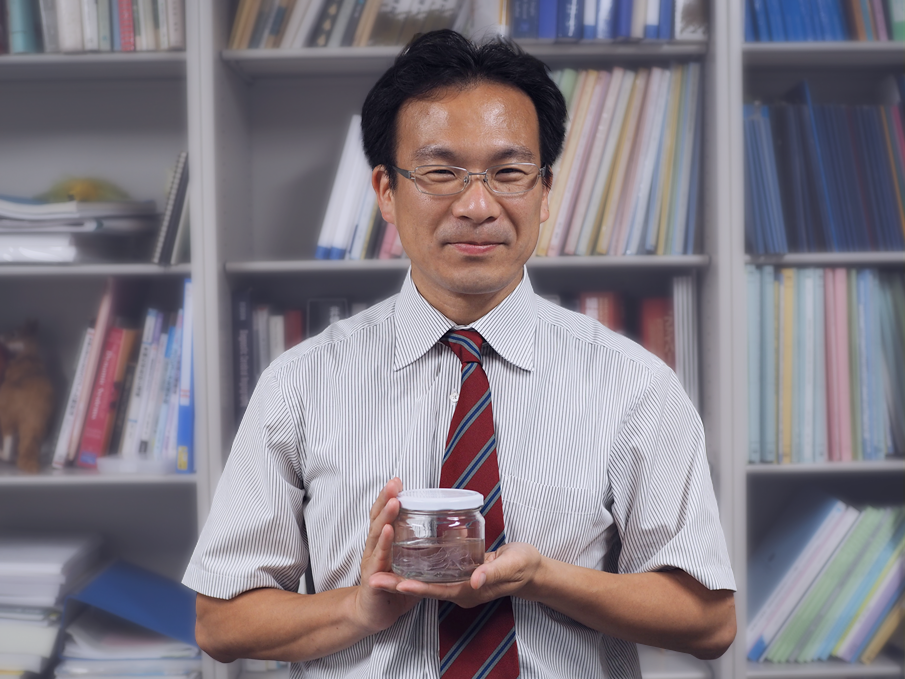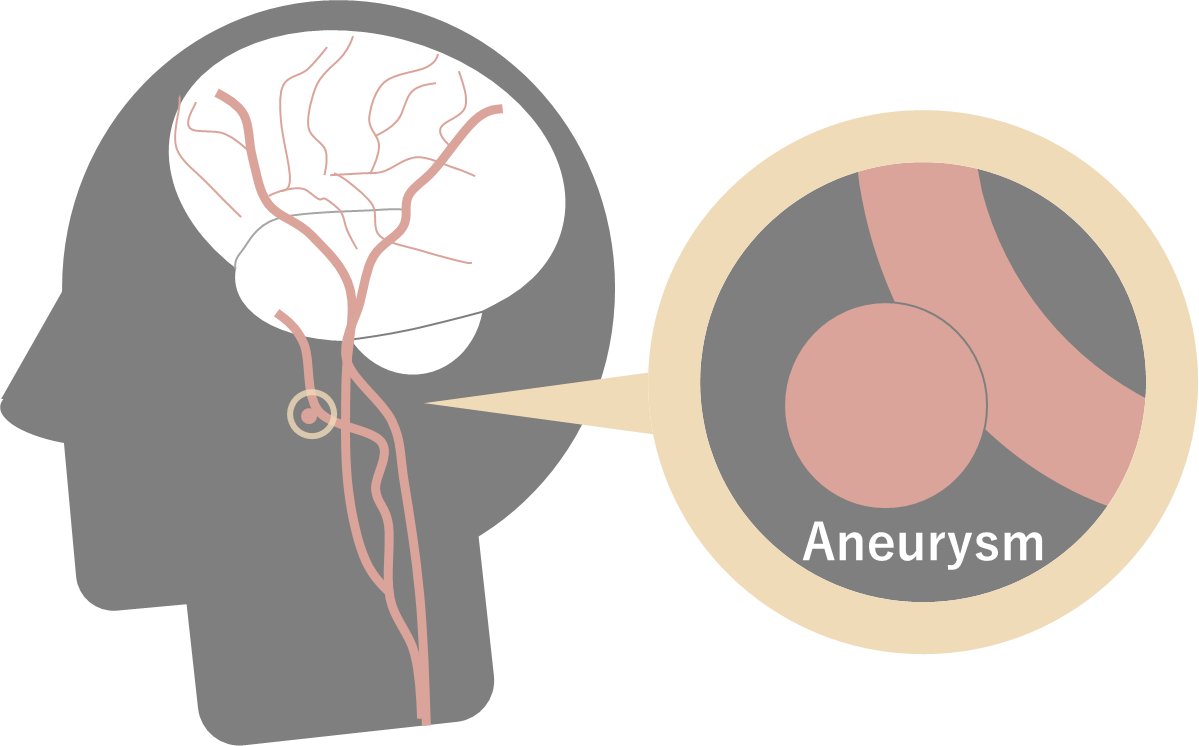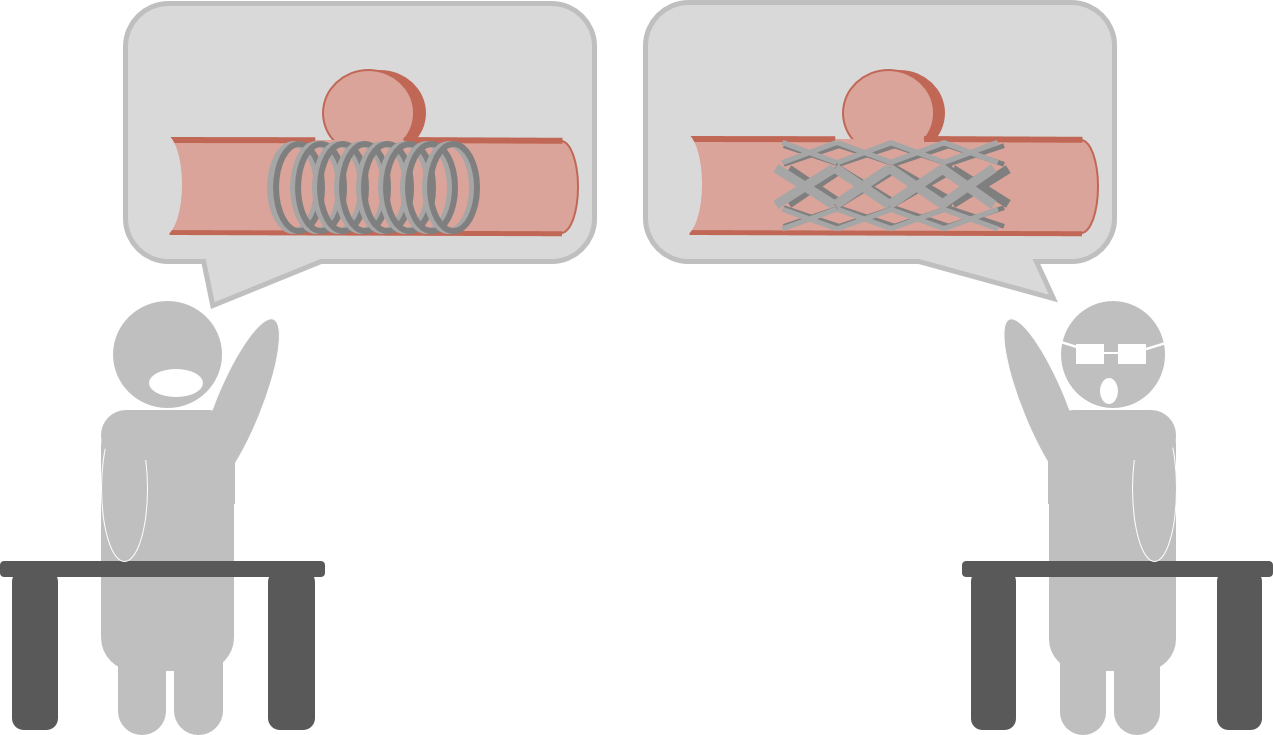


As we work on “the research on the treatment for diseases,” we have many fields,
such as symptoms, signs, diagnostics, treatments, and diagnositics after treatments, et. al..
To research these fields deeply, we need to study not only medical science and pharmacy, but also enginnering.
Take a cerebral aneurysm for example. This disease is a kind of cavity in cerebral artery or a knob on the artery.
This cavity sometimes ruptures and they lead to brain hemorrhages. The patients who suffered from this disease a high risk of dying. Unfortunately,
we haven't found good solutions for aneurysms. We don’t know how the aneurysms are formed and when they rupture.
Epidemiologically speaking, the tendency can be found more likely in females, smokers, and seniors. From the perspective of medical engineering,
several other causes or possibilities can be discovered in blood flows, the flexibility of arteries, and effects from bones.
Once they are discovered, they will lead greatly to the diagnostics, the blood flow control, and the development of new treatments.
We engineers are skilled in these “quantization of phenomena”, and in those fields, exchange of information among engineers and medical researchers is essential.
As a result, classification by quantizing epidemiology and treatments in the medical fields will become possible.

Although the new treatment was established, higher/better treatment skills would be required from medical doctors. As the number of treatments with higher techniques increase, further studies and many experiences are also needed.
Animal experiments have been conducted in various researches but they are problematic in terms of the animal rights and human rights.
One of the solutions for the problem is to apply models. However, the material properties of the conventional models is not similar to those of the real human soft tissues and are not useful for the most medical doctors.
Biofluid Control Lab. Institute of Fluid Science, Tohoku University , has developed the 'bio-model' of a realistic shape with mechanical properties similar to the real human artery. Using new polymers, this biomodeling is so transparent that you can see the artery and the flow in this 'bio-model'
Many medical doctors use it for the operative simulation and we seek to develop a more realistic biomodeling.

There are several mainstream treatments for cerebral aneurysm: closing with a clip after craniotomy, stuffing the cavity with the spaghetti-like metallic material called “coil,” inserting the tubular-shaped device made of a metallic string net called
“stent” into the artery to decelerate the blood flow inside the aneurysm cavity to turn it into a blood clot, or rather “do nothing about it if it doesn’t rupture”.
The devices for the treatment, which function inside a patient’s body, are called “implants”. From the medical engineering viewpoint, we make use of our ideas in many aspects: the shape, materials and their qualities (How flexible they are in contrast to human tissues? How hard they are? And how long they remain in blood vessels?). We also study how adaptable the materials to human body are, how they affect the blood flow, and how we examine aneurysm with these materials (by MRI, CT, DSA, and ultrasound?)
For instance, the stents are currently made with emphasis on the operability. In recent years, through investigating the computer graphic stent design, we found that the strut of stents (the frame that forms stent) affects the speed of blood flow which runs into the cavity.
Currently we are trying to establish a new design which enables stent to function fully with its efficacy. In the future we aim to create a new type of stent that fits the characteristics of the blood flow/artery of each patient.

Now, implant/medical equipment markets in Japan depend too much on imports from overseas; even over-sized equipment for Japanese physical size is often applied. One cause could be Japanese disorganized medical system/industry.
Personally, we are thinking if we could make a new type of implants that people want to use---something convincing to many patients, and which we can offer with confidence.
Currently there are few opportunities for engineers to have direct contact with patients. If there are more such chances, however, it will lead to greater productivity for engineers and medical doctors to create better implants. In order to develop better implants,
we think it is very important to have knowledge of both engineering and medicine, to discuss with medical staff and to communicate with patients.
Have you, engineers, ever talked to patients? Just think how your knowledge as an engineer can help you explain patients their treatments. We are hoping to establish an engineering that enable us to do that.